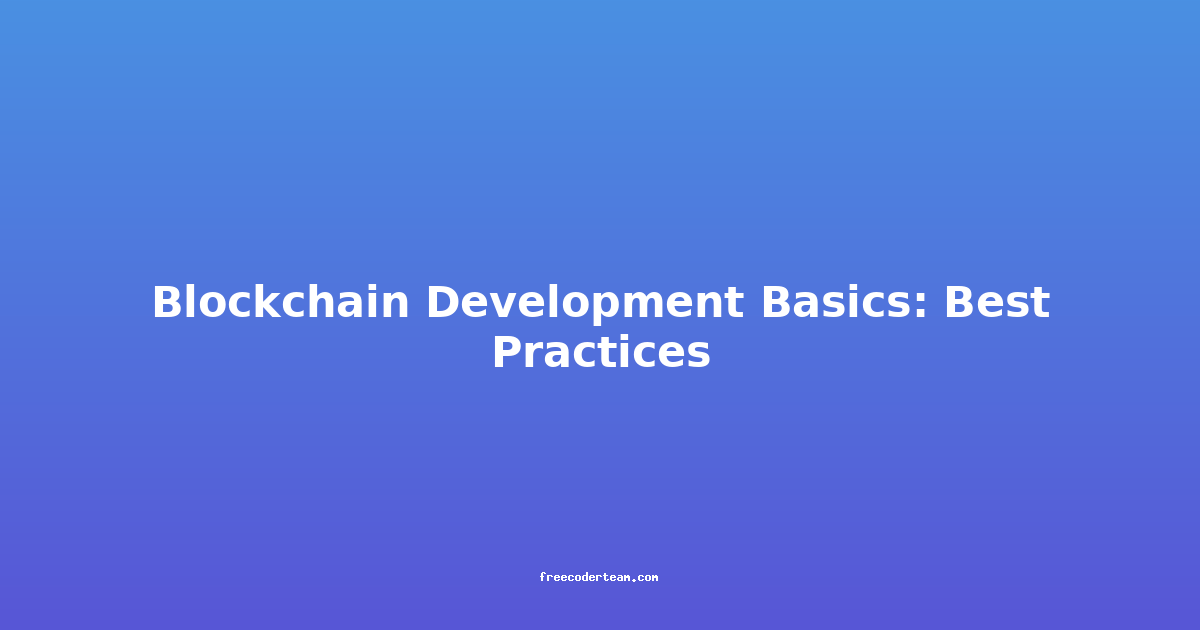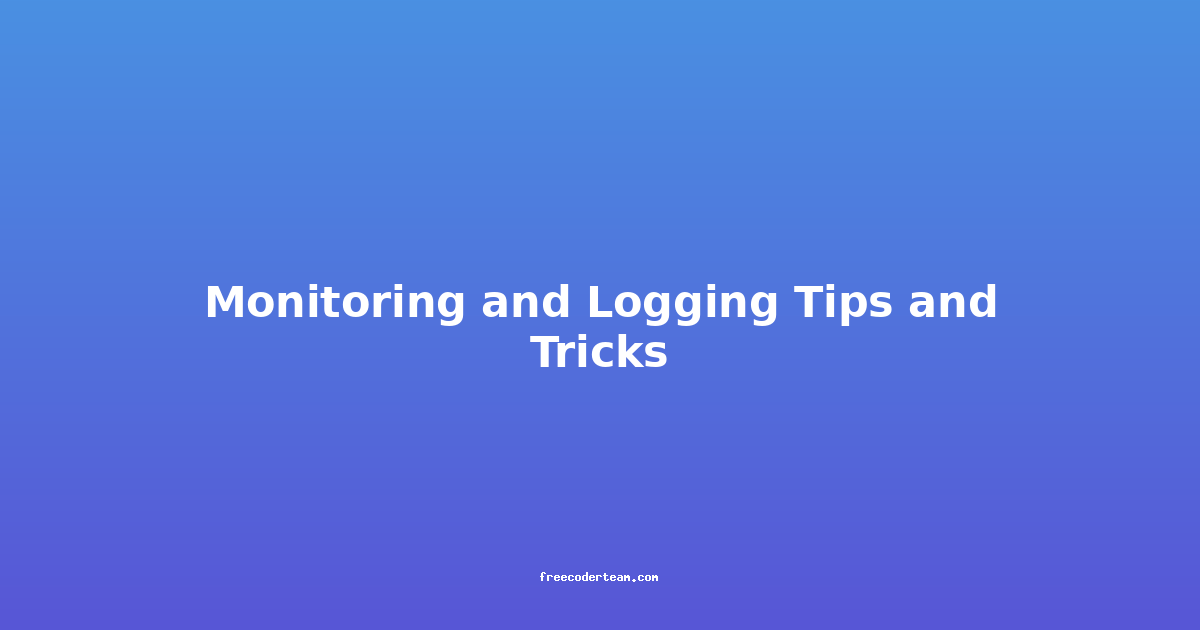Blockchain Development Basics: Best Practices
Blockchain technology has revolutionized industries by offering decentralized, transparent, and secure solutions. Whether you're building a decentralized application (DApp), a cryptocurrency, or a blockchain-based solution for supply chain management, understanding the best practices in blockchain development is crucial. In this comprehensive guide, we'll explore the fundamentals of blockchain development, highlight best practices, and provide actionable insights to help you build robust and efficient blockchain applications.
Table of Contents
- Understanding Blockchain Basics
- Key Components of Blockchain Development
- Best Practices in Blockchain Development
- Practical Examples
- Conclusion
Understanding Blockchain Basics
Before diving into best practices, it's essential to understand the core concepts of blockchain:
- Decentralization: Blockchain operates without a central authority, relying on a network of nodes to validate transactions.
- Immutability: Once data is recorded on a blockchain, it cannot be altered, ensuring data integrity.
- Transparency: All transactions are visible to participants, promoting trust and accountability.
- Smart Contracts: Self-executing contracts with the terms of the agreement directly written into code.
Key Components of Blockchain Development
Blockchain development involves several key components:
- Blockchain Platforms: Choose a platform like Ethereum, Hyperledger Fabric, or Corda based on your project requirements.
- Smart Contracts: These are the backbone of blockchain applications, enabling automated execution of agreements.
- Consensus Mechanisms: Ensure agreement among nodes, such as Proof of Work (PoW) or Proof of Stake (PoS).
- Nodes: Devices that validate and relay transactions on the network.
- Wallets: Tools for storing and managing digital assets.
Best Practices in Blockchain Development
1. Choose the Right Blockchain Platform
Selecting the appropriate blockchain platform is critical for the success of your project. Consider factors like:
- Use Case: Is your project public or private? Ethereum is ideal for public DApps, while Hyperledger Fabric is better for enterprise solutions.
- Scalability: Some platforms, like Solana or Avalanche, are designed for high throughput.
- Developer Ecosystem: Platforms with active communities and extensive documentation are easier to work with.
Example: If you're building a supply chain management system, Hyperledger Fabric might be the best choice due to its permissioned nature and enterprise-grade features.
2. Prioritize Security
Security is paramount in blockchain development. Here are some best practices:
- Secure Smart Contracts: Use formal verification tools like MythX or Certora to identify vulnerabilities.
- Use Secure Cryptography: Implement strong encryption algorithms to protect sensitive data.
- Regular Audits: Conduct security audits to identify and fix potential exploits.
Code Example: Here's a simple smart contract in Solidity that demonstrates secure token transfer:
pragma solidity ^0.8.0;
contract Token {
mapping(address => uint256) private balances;
function transfer(address recipient, uint256 amount) public {
require(balances[msg.sender] >= amount, "Insufficient balance");
balances[msg.sender] -= amount;
balances[recipient] += amount;
}
function balanceOf(address account) public view returns (uint256) {
return balances[account];
}
}
3. Optimize for Scalability
Scalability is a common challenge in blockchain development. Here are some strategies:
- Layer 2 Solutions: Use technologies like Lightning Network or Optimistic Rollups to handle off-chain transactions.
- Sharding: Divide the network into smaller, manageable parts to handle more transactions.
- Batch Processing: Group transactions to reduce network load.
Example: Ethereum's Layer 2 solutions like Polygon or Arbitrum are designed to handle high transaction volumes efficiently.
4. Ensure Transparency and Auditability
Transparency is a core principle of blockchain. Ensure that your application:
- Logs Transactions: Maintain a clear audit trail of all transactions.
- Open Source Code: Publish your smart contracts and code for public review.
- Documentation: Provide detailed documentation for users and developers.
Example: Projects like OpenZeppelin provide audited smart contract libraries, ensuring transparency and security.
5. Implement Robust Consensus Mechanisms
The choice of consensus mechanism can impact performance and security. Consider:
- Proof of Work (PoW): Used by Bitcoin, but can be energy-intensive.
- Proof of Stake (PoS): More energy-efficient and scalable, used by Ethereum 2.0.
- Delegated Proof of Stake (DPoS): Faster and more scalable, used by EOS.
Example: Ethereum's transition to PoS (Eth2) is aimed at improving scalability and energy efficiency.
6. Test Thoroughly
Thorough testing is essential to ensure your blockchain application is robust:
- Unit Testing: Test individual components of your smart contracts.
- Integration Testing: Ensure all components work together seamlessly.
- Fuzz Testing: Use tools like Mythril to test for unexpected inputs.
Code Example: Using Hardhat for testing a smart contract:
const { expect } = require("chai");
const { ethers } = require("hardhat");
describe("Token Contract", function () {
let token;
let owner;
let addr1;
let addr2;
beforeEach(async function () {
const Token = await ethers.getContractFactory("Token");
[owner, addr1, addr2] = await ethers.getSigners();
token = await Token.deploy();
});
it("Should transfer tokens successfully", async function () {
await token.transfer(addr1.address, 100);
expect(await token.balanceOf(addr1.address)).to.equal(100);
});
});
7. Leverage Smart Contracts Wisely
Smart contracts are powerful but can be complex. Follow these guidelines:
- Keep Contracts Simple: Avoid overly complex logic that can lead to vulnerabilities.
- Use Libraries: Reuse audited libraries like OpenZeppelin to save time and reduce errors.
- Gas Optimization: Minimize gas costs by optimizing contract logic.
Example: Using OpenZeppelin's ERC20 token implementation:
pragma solidity ^0.8.0;
import "@openzeppelin/contracts/token/ERC20/ERC20.sol";
contract MyToken is ERC20 {
constructor(uint256 initialSupply) ERC20("MyToken", "MTK") {
_mint(msg.sender, initialSupply);
}
}
8. Consider Interoperability
Interoperability allows different blockchain networks to communicate and exchange data. Consider:
- Cross-Chain Bridges: Enable asset transfer between different blockchains.
- Standards: Adhere to industry standards like ERC-20 for token compatibility.
Example: Projects like Polkadot and Cosmos are designed for cross-chain interoperability.
Practical Examples
Example 1: Building a Decentralized Marketplace
- Platform: Ethereum
- Tools: Solidity, Hardhat, MetaMask
- Best Practices:
- Use ERC-721 for unique items (NFTs).
- Implement a secure escrow system.
- Use Layer 2 solutions for faster transactions.
Example 2: Supply Chain Management
- Platform: Hyperledger Fabric
- Tools: Composer, Caliper
- Best Practices:
- Use permissioned networks for privacy.
- Implement robust access controls.
- Use smart contracts for automated tracking.
Conclusion
Blockchain development is a rapidly evolving field, and adhering to best practices is essential for building secure, scalable, and efficient applications. By choosing the right platform, prioritizing security, optimizing for scalability, and leveraging smart contracts wisely, you can create blockchain solutions that meet the needs of your users and stakeholders.
Remember, blockchain is not a one-size-fits-all solution. Tailor your approach based on your specific use case and requirements. With the right tools, practices, and mindset, you can harness the power of blockchain to build innovative and impactful applications.
Resources for Further Learning:
By following these best practices and staying updated with the latest developments in the blockchain space, you'll be well-equipped to navigate the challenges and opportunities of blockchain development. Happy coding! 🚀
Note: Always consult with security experts and conduct thorough audits before deploying production-ready blockchain applications.




